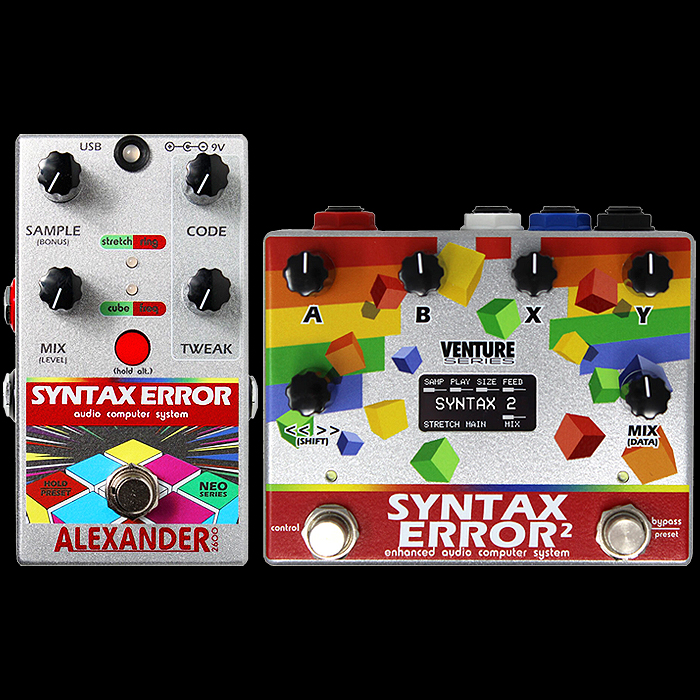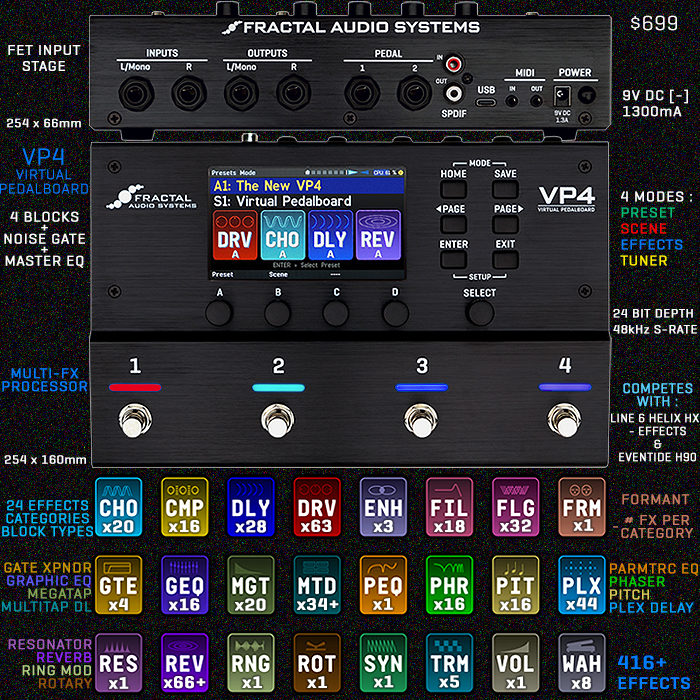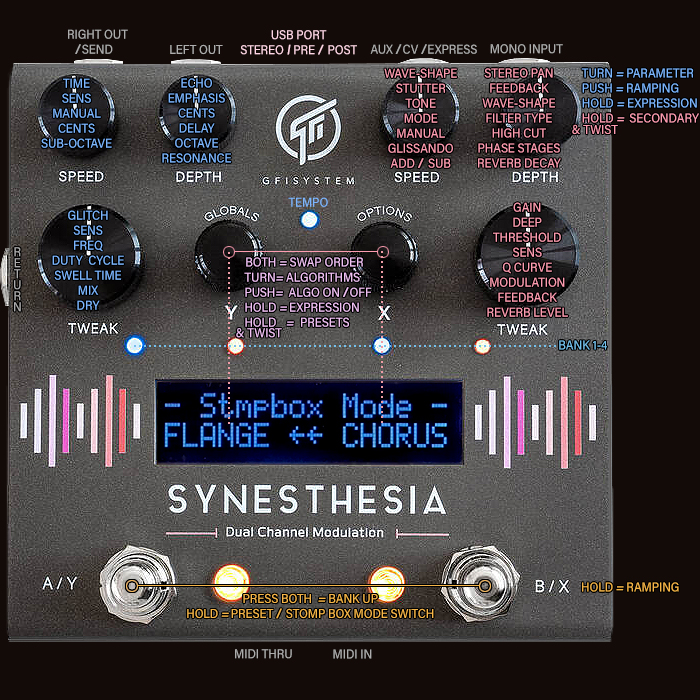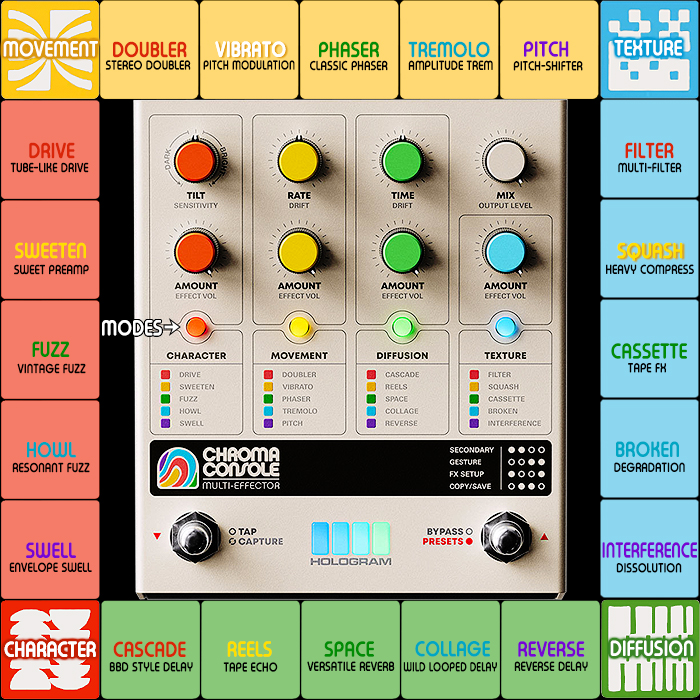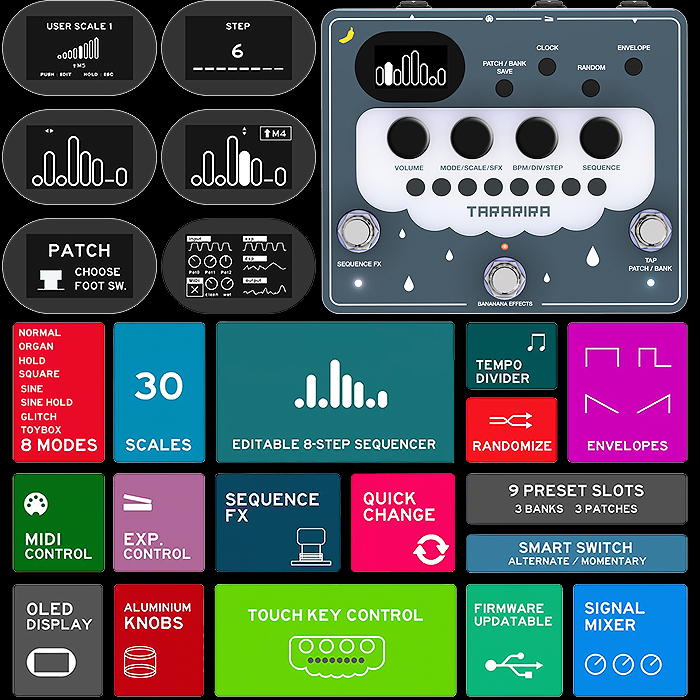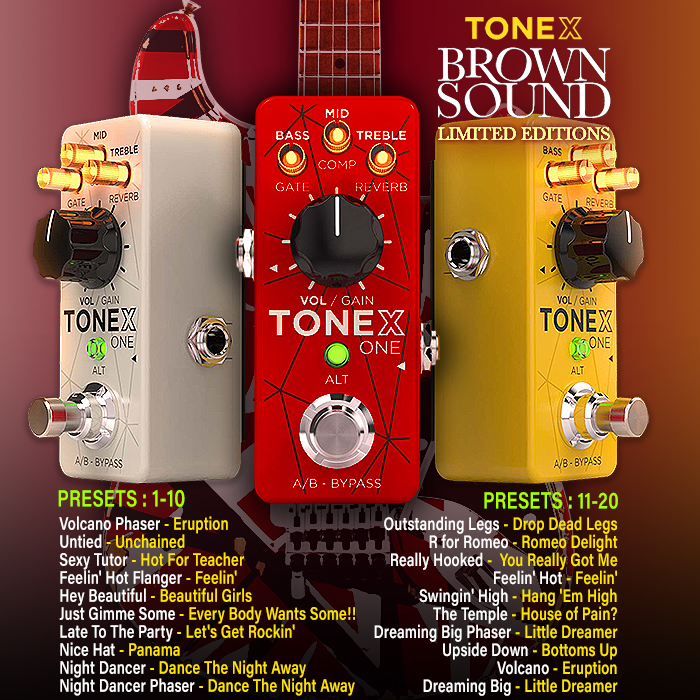The State of the Art and General Suitability of Modular Synth Style Multi-FX Units - Empress Effects and Poly Effects Innovations and Deviations
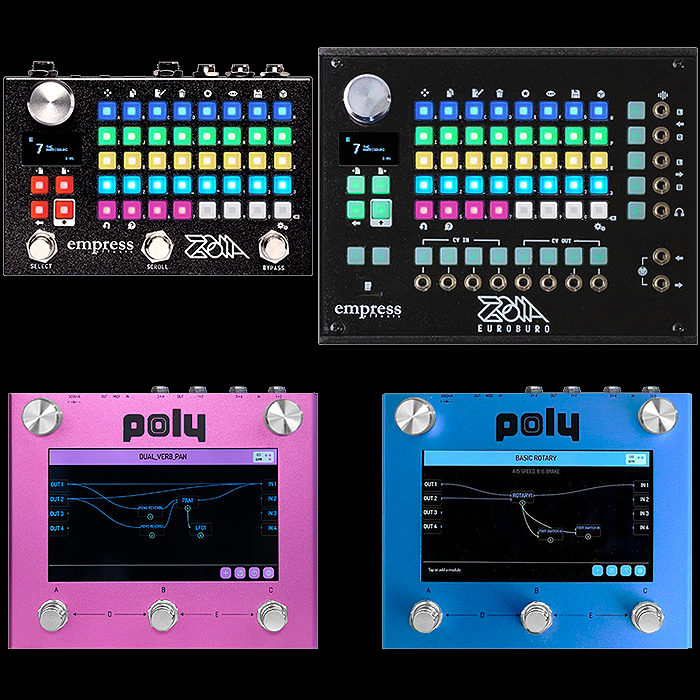
This post was triggered by a number of readers asking me for my take on the recent Modular Synth Multi-FX phenomenon. Where I composed a fairly long-form answer for one Joe D - and promised to make that part of a more circumspect review (this one!) where I compared the different approaches of Canada’s Empress Effects and the more recently highly newsworthy Poly Effects of Australia.
I myself am very much your typical guitar pedal enthusiast - who deploys a rather insanely complex but highly rewarding 40-strong floor-based pedal-chain. Before being a Guitar Gear and Pedal enthusiast in particular I’ve been a House and Techno DJ for the longest time - and have dabbled in some synthesizer stuff - including the Teenage Engineering OP-1 and Pocket Operators range - which I still have but use very infrequently nowadays.
My first encounter with Modular Synth Multi-FX was Empress Effects’ introduction of the Zoia at the 2018 Winter NAMM show. I loved the whole concept of an infinite FX Unit where you could assemble your own effects from a variety of modular components which were equivalent to specific Modular Synth Circuits and Controllers - using a combination of oscillators, filters, delay lines and controllers to bespoke build your own version of pedalboard - at least that’s what I thought back then.
In any case I was totally hooked - the hardware just looked amazing and so futuristic with all those different colour combination push-buttons and parameters. I will admit I was a little nervous in seeing just the one rotary encoder / knob - but felt that there would be some clever way to effect rapid on-the-fly hands-on changes as and when required.
I avidly followed every announcement - and was one of the first to order a unit when the pre-orders were eventually announced - and one of the first customers to get one - just in before the end of April 2019 as far as I recall. And that’s when the real journey started!
Empress Zoia and Zoia Euroburo - since April 2019 (initial launch)
I had become very familiar with receiving fairly regular updates from Empress' Steve Bragg and am a long standing fan of Empress Effects - owning the EchoSystem, Heavy, Multidrive and Zoia of course. I have always viewed Empress as the Canadian Strymon as such - a really classy and innovative operation with great community outreach. I would have acquired their Reverb too - and will as soon as they make one with the same advanced capabilities found on their EchoSystem!
Everything about the Zoia seemed to spark off excitement for me as I thought I could finally build my very own wholly personally designed pedalboard in a single effects unit. Right up until I started using it - I wasn't fully aware as to the inherently clunky and long-winded nature of piecing together effects from basic components - in some ways just a few steps removed from having to program your own Spin FV-1 chip!
While the basic methodology is quite straightforward - and the concept of selecting effect component elements on a button and then joining that up with input and outputs and other serial or parallel processors. The basic understanding of how it works is not that complicated. For your typical guitar guy though - building up fully featured effects in this way is wholly alien - as these are really relatively raw building blocks - where you have to assign and build all parameter controllers, footswitch activators / responders - and various secondary and tertiary controller elements you really need to have written down in diagrammatic form first to make sense of them.
Then there's the very detailed menu options for editing and saving and manipulating all those myriad raw components - which for a very typical effect can range across several 'continuation pages' of button assignments - and like any basic coding activity - you make one tiny mistake and none of it works!
What most don't realise here is that this is actually a totally different change of scene - and is best exemplified by the newer forthcoming Zoia Euroburo unit which does away with any pretence of being a floor-based unit. And while you can by all means deploy the Zoia to a fairly broad extent via its floor-pedal format - you need an entirely different desktop environment for the hours and hours of programming / effects building that the device demands. Sure you can download from a very extensive library of existing already composed effects - but trying to make tiny changes to those can be a complete nightmare.
So I persevered for a number of weeks and months - sat at my dining table with the separated Zoia - like I said I needed an entirely different centre of operations just for the Zoia - and some very long cables to connect back into the chain so I could check and test whatever I had attempted to build. You certainly have to have the right degree of patience and perseverance to be the right personality type for this pedal - and I found that I just really did not get on that well with the input dynamics courtesy of that single rotary encoder and tiny screen. You also often quickly loose track of where you were in the process and need to edit and check each button cell and make notes on exactly how and why you were using each button / block. So that process is undeniably clunky.
Over the 2+ core years of Zoia development though the pedal has been ongoingly and increasingly tweaked and refined - while each firmware release still brings with it a new set of glitches - however minor some of those may be. And so while the appeal of the Zoia for what it can do can be wondrously great - the actual live experience of slogging through the pedal set-up can make it all a little overly time consuming, fiddly and frustrating.
I still very much see the potential and possibilities of such a pedal - but having seen the improved interface of the Poly Effects devices - I really rather much prefer those active visual cues - while that format has its own set of specific problems.
I work in software at the highest enterprise business levels and am well aware of the difficulties and challenges that come with the need for constant firmware and software updates and upgrades - and what the recurring issues there are in their workflow, process and transaction of such development and evolution. It needs to be noted that these Pedal companies typically involved in this sort of work have very small teams of developers - often just one or two guys, rarely more than a handful - and proper unit testing is pretty much impossible under those constraints - which makes for a lot of glitches and inconsistencies - and means some things take an age to be sorted and some may never be...
I'm actually prepared to put up with all of those issues and quibbles if I find the overall experience to be sufficiently rewarding - which this experiment turned out not to be alas. I just didn't enjoy the endless need to update and upgrade and reconfigure and trouble-shoot and problem solve ad infinitum. The Modular Synth guys definitely have an advantage here and which is why the Zoia is branching out in the direction of the Euroburo - which is obviously a proper pro rack / desktop only version. I feel that the original Zoia will eventually be retired and there may be a simpler Guitar edition with more floor-based dynamics and at least a few more hands-on knobs - that is properly pedalboard-friendly and really works for most guitar players - which I don't believe the current Zoia does - at least not for me and my preferences.
Zoia Key Features
- 83 Modules and growing in 5 Categories - Interface, Analysis, Audio, CV and Effects
- 20 Ready Made Effects Modules - Tone Control EQ, Delay w/Mod, Ping Pong Delay, OD & Distortion, Fuzz, Compressor, Gate, Plate Reverb, Hall Reverb, Room Reverb, Ghostverb, Reverb Lite, Phaser, Chorus, Vibrato, Flanger, Tremolo, Env Filter, Ring Modulator, Cabinet Sim
- Crisp (but tiny) OLED Display Screen
- Control Port and Midi Connectivity
- Triple Footswitches for easy Patch Selection / Function Activation
- Built-in Help / Quick Info at a Glance
- SD Card Included
- 64 Patches
- 64 Pages per Patch
- 40 Blocks per Page (Pair of Blocks used for Stereo Left/Right Signal)
- 7 LED Colours : Blue, Green, Red, Yellow, Aqua, Magenta, White (I thought more were going to be added?)
- Swap and Share Patches : via Patchstorage.com
- High-Quality Audio : 48kHz sampling, 24 bit conversion and 32 bit internal processing
- Extremely Low-Noise Signal Path : >105dB
- Input Impedance : >= 1MΩ
- Output Impedance : 100Ω
- Frequency Response (-3dB) : 10Hz – 23.4kHz
- Total Harmonic Distortion : 0.22%
- Output Headroom : +16.2dBu
- Power Supply : 2.1mm connector, 9VDC center negative, 300mA
- Length : 5.7"
- Width : 3.75"
- Height : 1.75" (Enclosure only)
- Weight : 1.5lbs / 0.680Kg
- Price : $499
Poly Effects Digit and Beebo - since July 2019 (initial Digit launch)
I was first aware of Poly Effects some months after I spiritually boarded the Zoia Express. I recall reading a piece by Gabriel Tanaka on the currently on-hiatus Best Guitar Effects blog. I was obviously already on a different journey - and I wasn't initially particularly captivated by the sort of seemingly etch-a-sketch format with just two encoder knobs in either top corner. I think I was more wedded into the slightly more solid idea of a robust-looking hardware execution that the Zoia was taking, but I was also a little confused by the early messaging for the Poly Digit. I will always typically go for hardware over software - as the former is usually good for life - while the latter is only good for a few years if you're lucky! (Actually complex metaphor which differs for different consumer devices!)
The Digit was first billed as a Quad Delay, Reverb, Mixer and Cab Simulator - which I thought was a little weak tea compared to the fully Multi-FX status of the then Zoia. I gradually came to understand the unique distinction of Poly Effects' 4 inputs > 4 outputs methodology and the ability for almost limitless parallel and serial routing - obviously curtailed by the units processing power and screen dimensions and resolution.
I do admit that initially I felt that albeit a little more expensive - that the Zoia was more the kind of device I needed - as I wanted to make a fully virtualised pedalboard from my own bespoke-defined effects modules. I reasoned that right at that time I had a number of very decent Delay and Reverb units that I could by all means route in parallel if I really needed to. And I really wasn't looking for a Mixer or Cab Sim utility - so the Digit fell a little flat for me - while there were still some decent demos at the time - particularly for the Convolution Reverbs - but overall I wasn't really that tempted.
I only really got properly switched on to Poly Effects at this year's one and only NAMM Show back in January - where Poly's Beebo Multi FX Unit was first properly showcased. I had known it was Australian, but I wasn't aware before then that it was essentially a one-man band - one Loki Davidson. And while Loki is obviously an incredibly hard-working genius - you cannot do proper software unit testing with just one developer.
The Beebo is an entirely more exciting proposition (than the Digit) although it does kind of muddy the waters with the Digit as you can load up both frameworks into either Digit or Beebo units - it's the same hardware - just the paint-job is different from what I understand - sparkly pink vs sparkly blue (not sure why you shouldn't be able to load both into the one unit unless there are processing and memory limitations?).
The Beebo at last though is a worthy competitor to the Zoia - and because of its overall more intuitive Touch-Screen Graphic User Interface - it has some significant advantages over the Zoia - where it is more easily learnable and less constrained by the physical form factor and number of solid buttons that make up that hardware. The Beebo is at last another proper Modular Synth Multi-FX Unit - where you can easily pull up and arrange on-screen blocks of effects and join them up as messily or neatly as you wish - which certainly has some advantages over the more rigid nature of the Zoia.
However - the Zoia is a far more mature product, much more refined and currently with infinitely better support resources - including amazing documentation by Empress and Third Parties. By contrast the Beebo currently does not even have its own proper manual yet - it shares the Digit manual which doesn't make a whole lot of sense, and then there is a link to the Poly Effects YouTube Channel for a handful of 1 and 2 minute demos - currently numbering a round half dozen!
For both the Beebo and Zoia there are support communities of influential effects purveyors and experts - many of whom have set up their own modules and shared for download. While again this is an area which the Zoia has a significant lead on. While I feel that format wise - the Beebo is quite a bit more user-friendly if it gets enough time and effort to be refined.
If you watched Henning's exemplary demo of the Beebo (as above) you will know all the pitfalls you need to be aware of - while I'm not sure Loki will grant you quite as much access as he gave Henning. And while most of the glitches and eccentricities of the Zoia have been ironed out by now - the Beebo is by contrast replete with all manner of odd implementations of inappropriate controls and numerical scales. And to some extent rather more than the Zoia - it needs some specialist knowledge for the completion of some very basic functional tasks. Like having to use secondary VC controllers to enable footswitch functions.
We are firmly in a format war now - Hardware vs GUI / Zoia vs Beebo. And these wars are never determined by the hardware or firmware but the actual software modules or core elements. The original Philips G2000 and Sony Betamax VCR solutions were far superior to VHS, but VHS won out because of licensing in the end and because they were the first to see the potential of Home Cinema and do all those licensing deals with the different film studios. Philips and Sony were largely devised as professional recording / home-taping solutions - and had far better hardware and technical fidelity - yet failed to see where the market was going.
I feel that the Zoia and Beebo are merely stepping stones to the next phase of an even better evolution of devices - where they can be seen as the Philips and Betamax - and VHS is just around the corner.
Along the way of really trying to get into the Zoia I kind of burned myself out on those sort of devices - so I have determined that I will sit out this phase of development until something a little more intuitive and more pedalboard-friendly comes along.
Both the Beebo and Zoia require enormous personal investments of time to get properly to grips with them and there is still plenty of room and scope for misadventure. I admire these pioneers and fully support their efforts - but I've decided to sit out this round for now.
Beebo Key Features
- Intuitive Onscreen workflows with unparalleled hands-on tweakability
- 2 x Rotary encoders - with expansive and fine-tuning capabilities
- 3 x Footswitches
- 4 in / 4 out signal routing
- 5" GUI Touch Screen
- Core Effects include : auto swell, delay, algorithmic reverb, chorus, looping delay, mono & stereo EQ, mono & stereo compressor, pan, phaser, reverse, rotary, saturator, phaser, warmth and through zero flanger, bitmangle, freeze, granular, 6 different virtual analog filters, powerful LFOs, time stretch, turntable stop, twist delay, VCA, wavefolder, attenuverter, granular texture synthesiser, 16 model macro oscillator voice, meta modulator with 7 blendable signal combining algorithms including ring modulation, comparators and cross folding
- 30+ control parameters via Rotary Encoders
- Ability to Combine any number of effects and control one module from another
- Ability to assign different functions and parameters to foot switches
- Ability to connect up parameters to a random source, an LFO or an envelope follower
- Ability to manipulate modules with control signals
- Ability to expand and enhance effects by adding delay modules and further modulations
- Ability to send control signals out as MIDI CC to control other pedals - as Henning did with the CBA Automatone Preamp MKII
- Beebo plays well with others and It’s easy to share presets, just plug in a usb flash drive and export or import them
- MIDI to V/oct module allows you to drive the synthesis modules from MIDI note input
- Power : 500 mA 9V center negative
- Size : 152 x 125.5 x 69mm
- Price : $399
Poly Beebo vs Empress Zoia vs Alternatives
I feel that once you scratch the surface here - both these pedals are broadly targeting the same sort of functionality - the end goal to be the de facto Modular Synth Style Multi-FX unit that appeals to as broad a demographic of musicians as possible.
Had I not been an early adopter of the Zoia, it's likely I would have taken the gamble on the Beebo instead - whose interface certainly catches the eye. And while the visual GUI aspect of it is significantly more appealing than the Zoia - the Zoia is to most purposes the more capable and well-rounded device overall at this point in time. As mentioned - the Zoia is better established - and has a much more polished outlook with better established support community and superior support materials - more downloadable patches etc.
Both of these projects are still very much Works in Progress - and while the Beebo has the more appealing profile as a consumer product - I think that overall the Zoia is still likely to be a more robust and reliable unit for various reasons - they have had a lot longer and more resources to iron out all the bugs and inconsistencies. However industrious and conscientious Loki is - he will at some stage have to gear up his business / development approach and that is very likely going to bring in some significant levels of disruption as you always get with such transitions.
For professional musicians and synth guys in particular I would probably wait for the Zoia Euroburo to materialise later this year or early next. While as a consumer product - the Beebo has more appeal - and is also currently priced more aggressively. The nature of the Beebo build is generally simpler than the hardware approach of the Zoia - and obviously has far fewer moving parts.
If you had to buy one now and you're just a typical guitar enthusiast then I feel you would probably be overall happier with the Beebo - although I feel that most will get frustrated eventually and give it a rest like I did on the Zoia as such. The Zoia went in on my pedal-chain slot that was first occupied by the Strymon Mobius, then the Boss MD-500, then Zoia, and now GFI System Synesthesia. The Synesthesia is the perfect compromise on form and functionality for me - and gives me a Multi Modulation unit that is complex and fully featured, but relatively easy and intuitive to control. I've since then also added the quite superb Cooper FX Arcades Modular Multi-FX Unit - which gives me further coverage in that related area plus quite a few more unusual and glitchy effects - all with an equally innovative interface and hardware combination. So my chosen path for now is the Synesthesia + Arcades - which is also a somewhat dearer route than either of the Zoia or the Beebo - yet far more practical and usable for my own needs!
I have also mentioned the Eventide H9 Max which I also have in my chain - but don't use as much as the Synesthesia and Arcades currently. While something like the Line 6 Helix Stomp could also be a suitable replacement / alternative here for many - for how they will end up using it. Even my Zoom MS-100BT is capable of doing some really unusual combination effects - obviously not to the same degree and fidelity as these newer devices - but still perfectly usable in many scenarios.
You will need to decide exactly how you most intend to use these kinds of devices - and how the usability and workflows of each make up that experience. I feel I'm pretty well covered with the Arcades, Synesthesia and H9 Max as is. I might always revise that opinion at a later stage - and if I feel I can get more out of a Beebo - I will by all means look to getting that involved - and despite what I say here - I still haven't totally given up on the Zoia! My choice right now is however to have these types of effects primarily as floor-based stomp-boxes - and like I said - the Zoia and Beebo are really rather programmable desktop computers!
Where lies the Future of Modular Synth Multi-FX?
As we've seen with the Zoia, I'm pretty confident that these devices will branch off in two distinct directions - more professional proper studio rack-style tools like the Zoia Euroburo - and more consumer- and pedalboard-friendly variants for your more typical guitar enthusiast. Currently the Beebo sits somewhat in between those two eventualities.
I've said before in this article that I feel that the Zoia is the Philips G2000 and the Beebo is the Sony Betamax or vice-versa - for those of you who know your VCR history. Both those hardware formats and video cassette tapes were hugely superior to the later VHS format which though took over the market. Philips - ever the great innovators, but always poor marketeers were wholly left out as VHS took over the consumer market and Sony Betamax pivoted into professional recording equipment for studio work.
These devices we are featuring here are but stepping stones on the path to something greater, more powerful, easier to use and more practical. Both devices have significant usability issues for the average Joe (apologies for the terminology here Joe D!) - which mean they cannot be long-term mass-market viable solutions. Each has an appeal in more professional disciplines - and I feel that there will be something just around the corner which will eventually outmatch both - and you will be left with slightly anachronistic hollow shells at some stage - as generally happens with the inevitable passage of time. This does not mean you cannot ongoingly make use of the Zoia or Beebo or get something positive out of them longer term - it's just that these sorts of things can move on very quickly - just look at your current mobile phone and remember what happened to you previous one and the one before that.
I can't for sure say when the next phase of evolution will be upon us - but Cooper FX and Neural DSP are doing particularly interesting things with intuitive interface designs currently and we will soon have some slightly more mature, better packaged, easier to use alternatives which will make you wonder how come this technology was ever quite so clunky to manage back in the day!
This doesn't mean I'm opposed to these devices - you just need to lower your expectations and have the appropriate mindset that is more predisposed to getting along with pedals of this nature. These are not your typical stomp-boxes at all - these are desktop programmable computers really - and evolution-wise they're still only a couple of steps on from DOS style input computer software.
Future devices will rely more on AI and automations / predictive suggestions even, and will be a lot more pre-packaged and fully formed in their nature - so you can literally swipe things in and out in seconds - and set up your whole virtual board in a few minutes max versus spending hours building raw component effects from scratch.
I also feel that Bluetooth is going to become the de-facto route for updates and upgrades for these kinds of pedals - and that you will have separate proper desktop app environments to do all the assembly - with more properly intuitive menus. I work on a 27" screen - many have even larger ones - which is significantly a better surface area to employ that the 5" screen of the core Poly hardware device. I would imagine in the near future - a smart menu Object-oriented desktop utility that would give you the best environment to assemble, update and combine your effects algorithms - and then you just beam in the new settings over Bluetooth - whether you need to piggy-back via your mobile would be optional - possibly you would just use some form of wifi.
I feel far too few complex pedals have decent Bluetooth capabilities and that it's 100% preferable over any USB cable or USB memory stick update method. Once 5G comes more into use - you will be able to do very complex data transfers and backups incredibly quickly and that will all fuel the development of more flexible and responsive devices. A lot of pedal technology still dates back to the 60's and 80's and even early 2000's. There will surely be some more technical innovations appearing any day soon - new chip types, better GUIs and smarter programming environments overall. However evolved the Zoia and Beebo currently are - they're not quite up with the bleeding edge of what the tech industry is capable of. A lot of musical devices have come about via surplus and offcuts, side-projects even from other leading industries - the proportion of carte blanche musical technologies and innovations is still rather tiny and not fully up to date with what is truly technically possible. The overall lag is probably around 5 years or so currently - but we will soon see some of that smarter tech filtering through and some of our favourite devices will start to look very archaic indeed!
What say all of you?

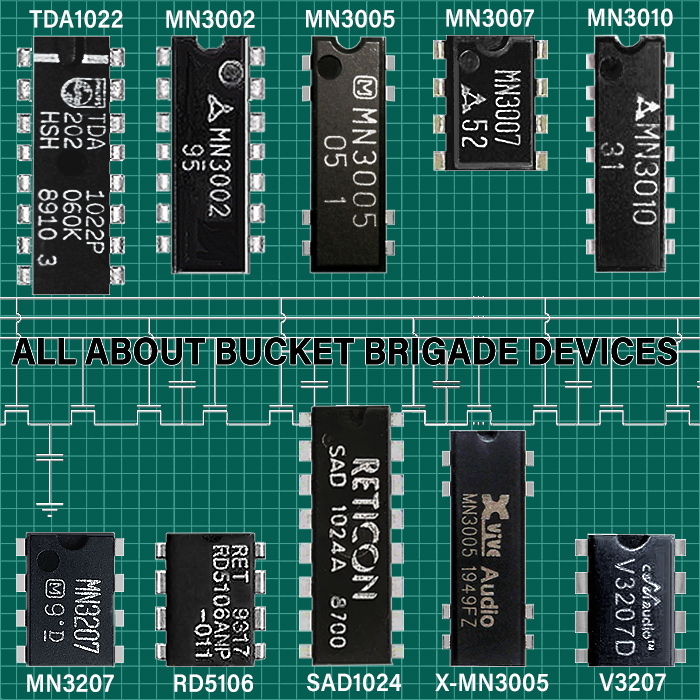
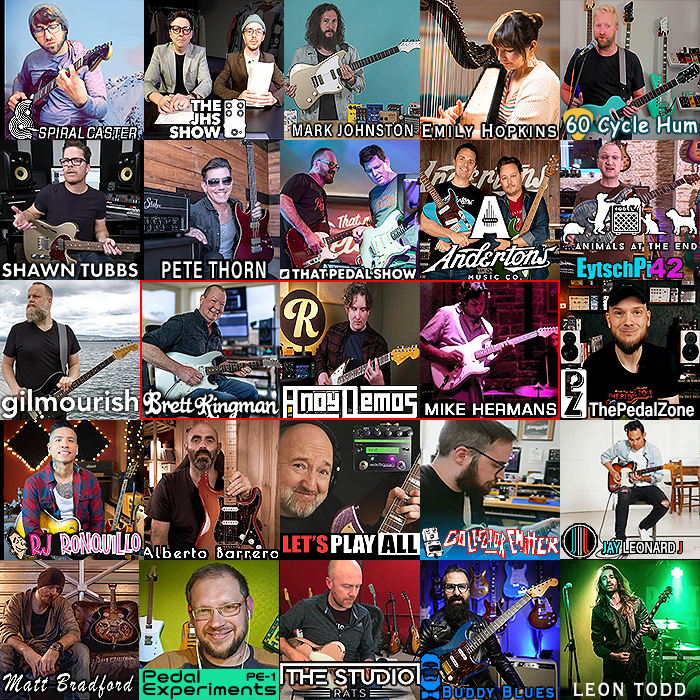

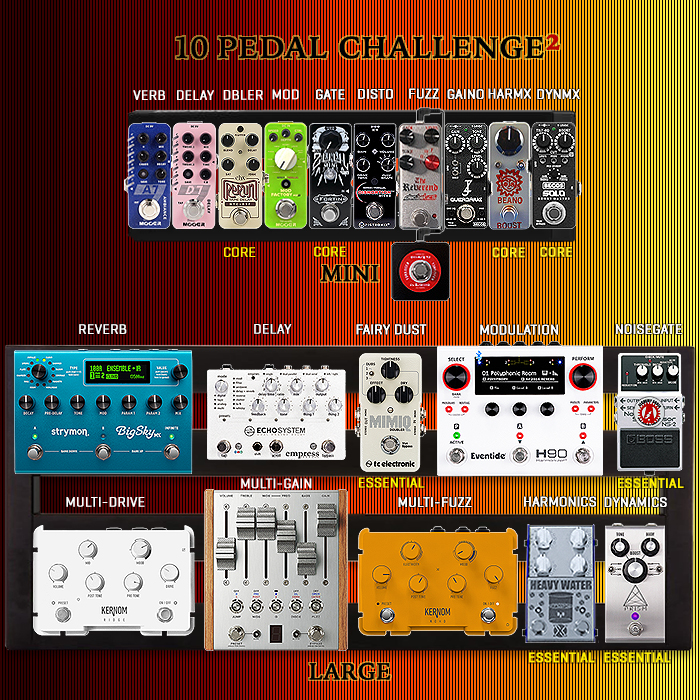
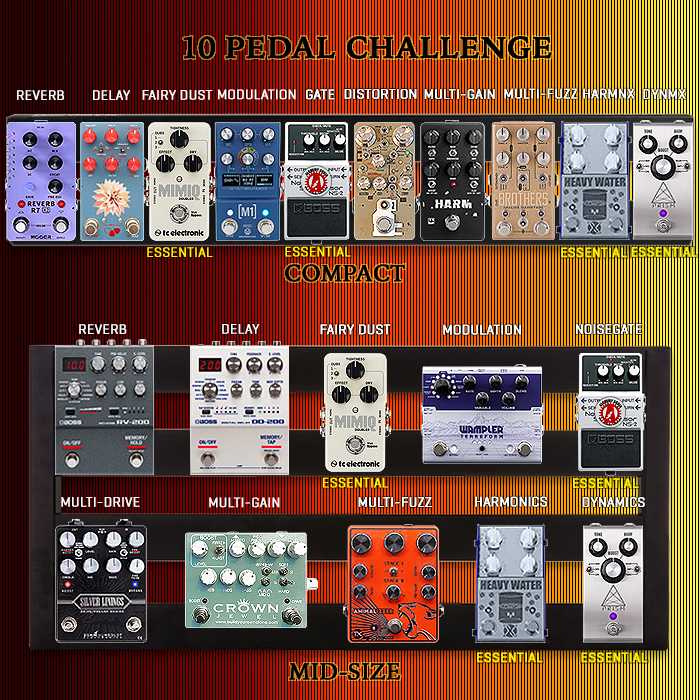

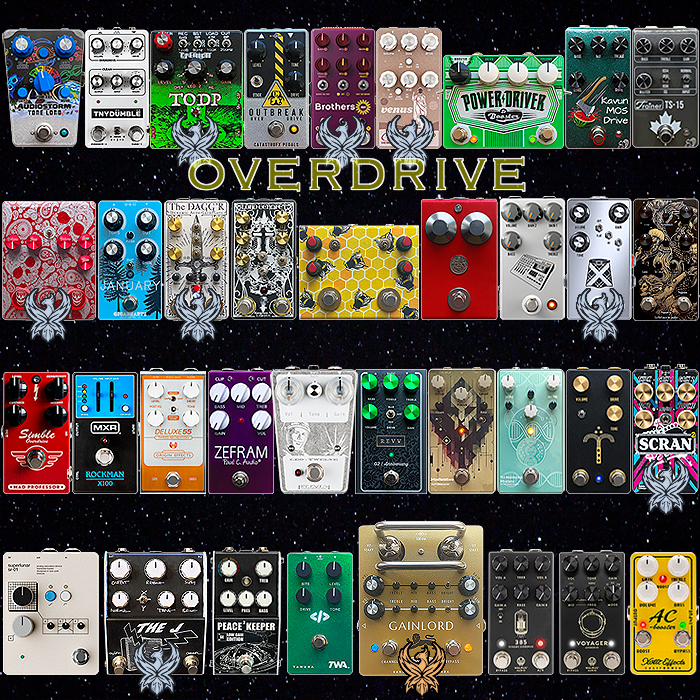
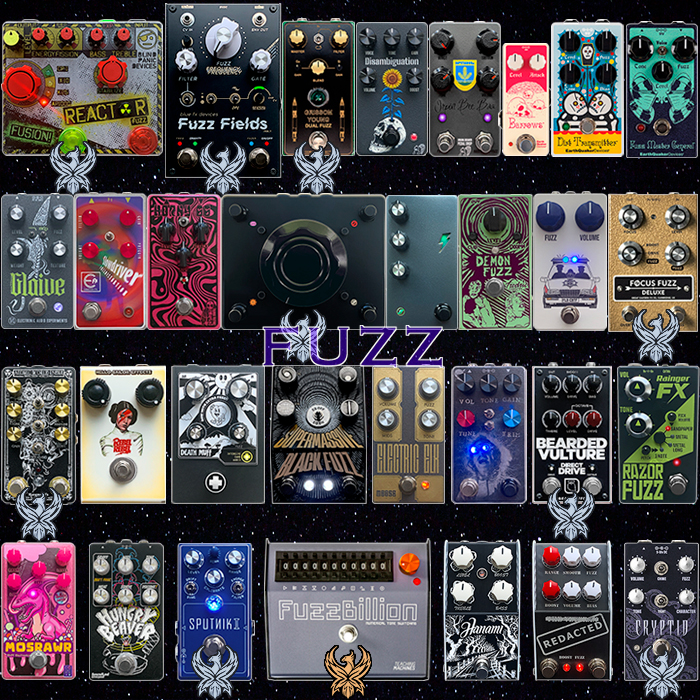

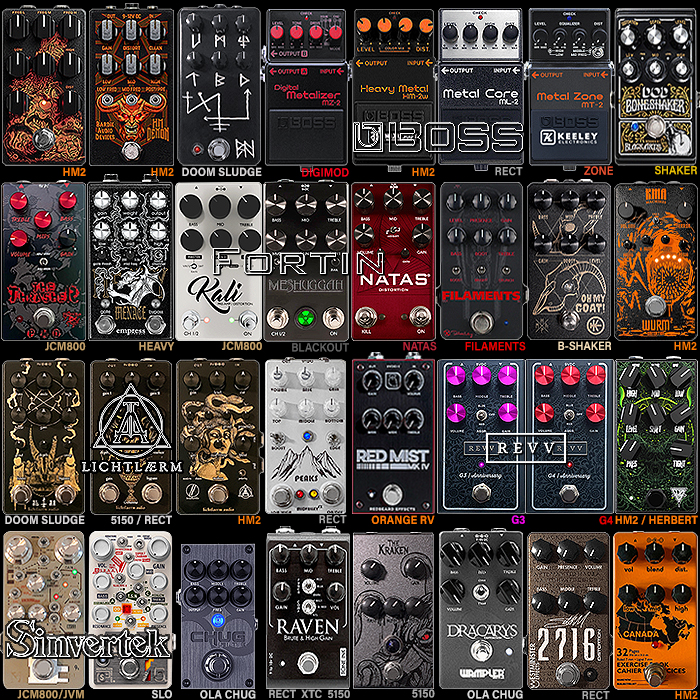
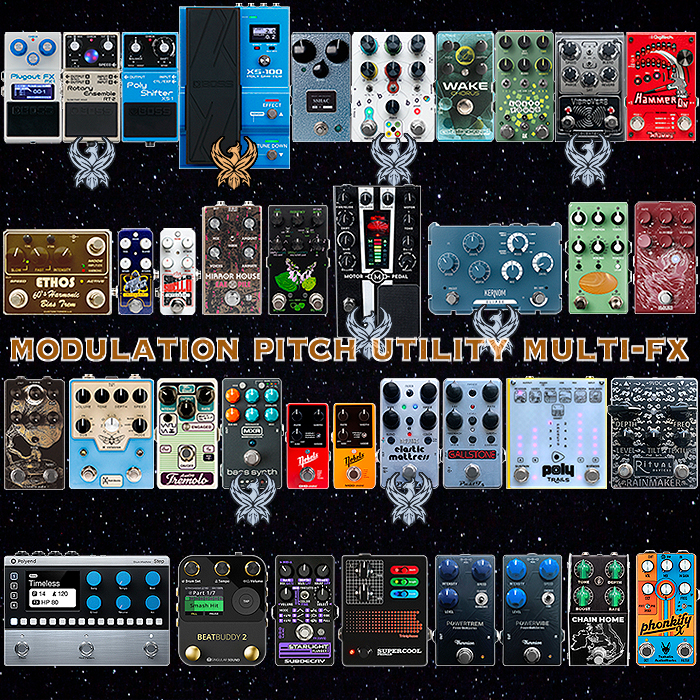
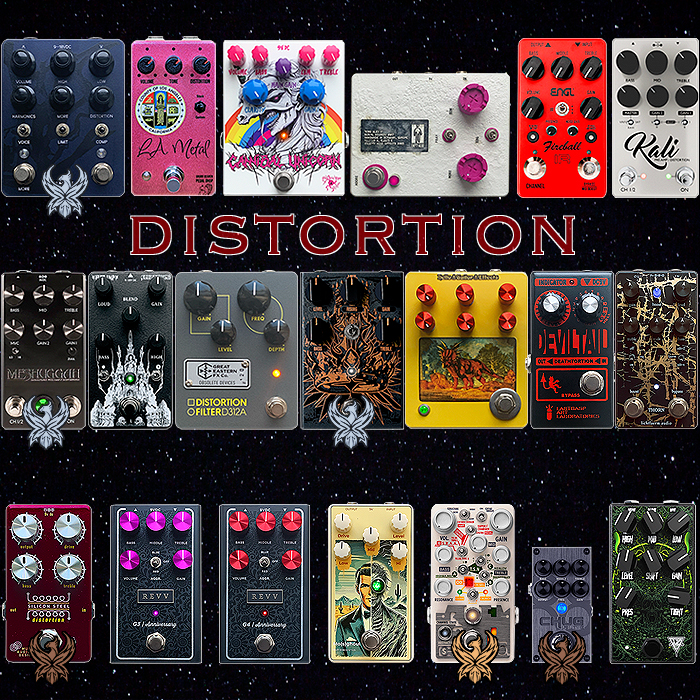
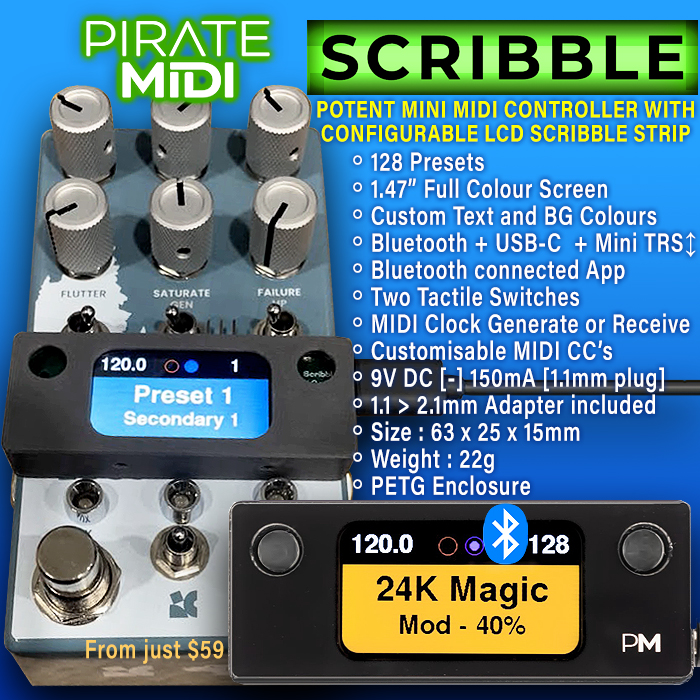

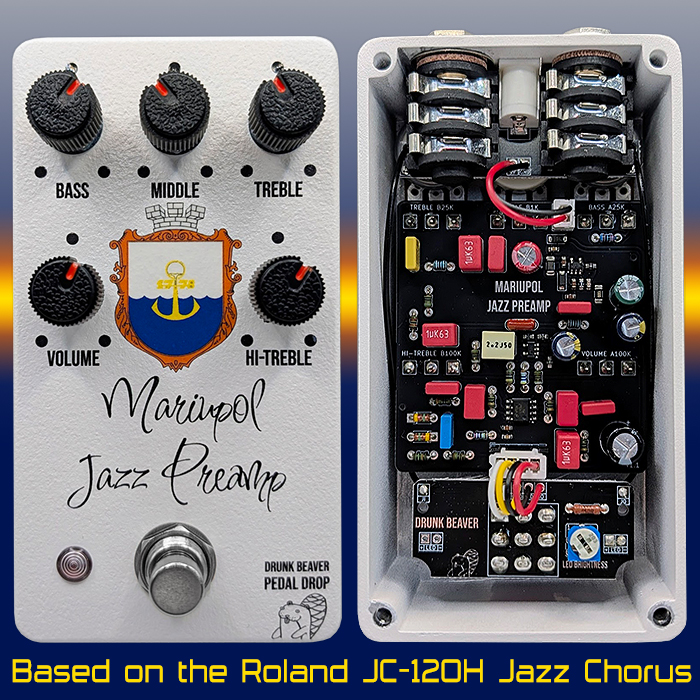




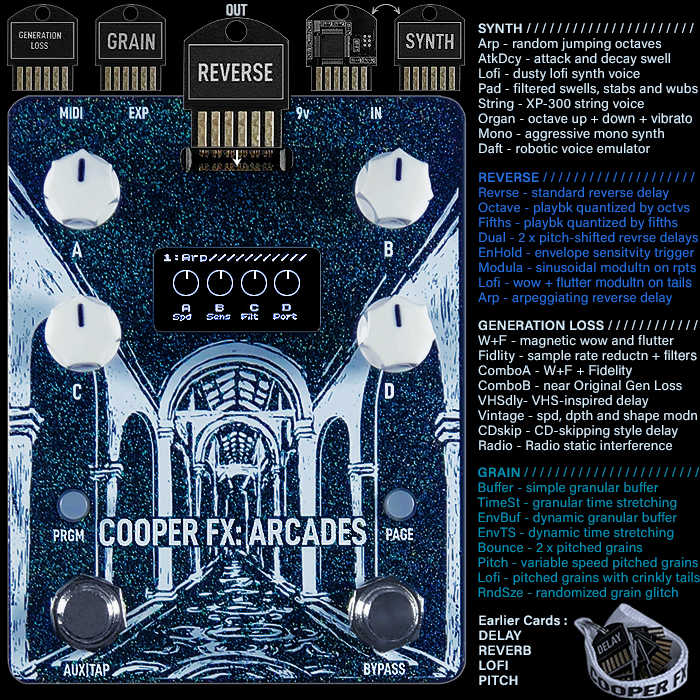
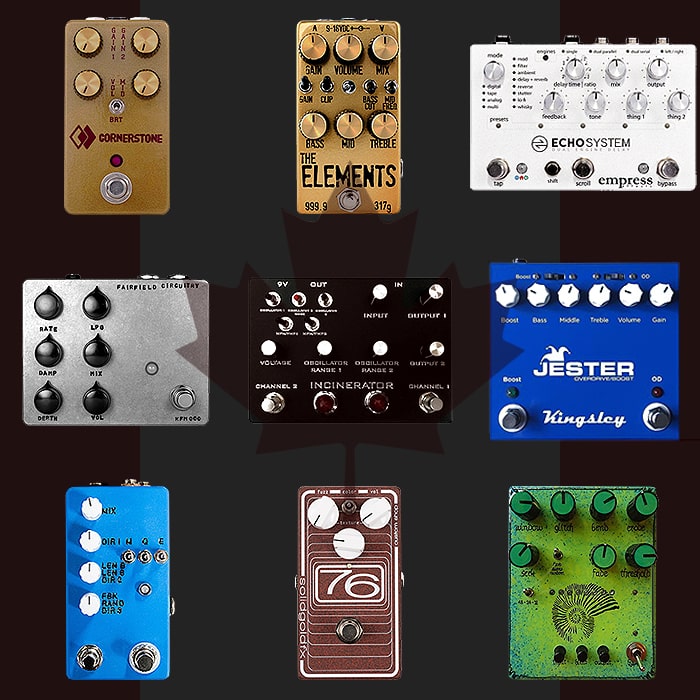


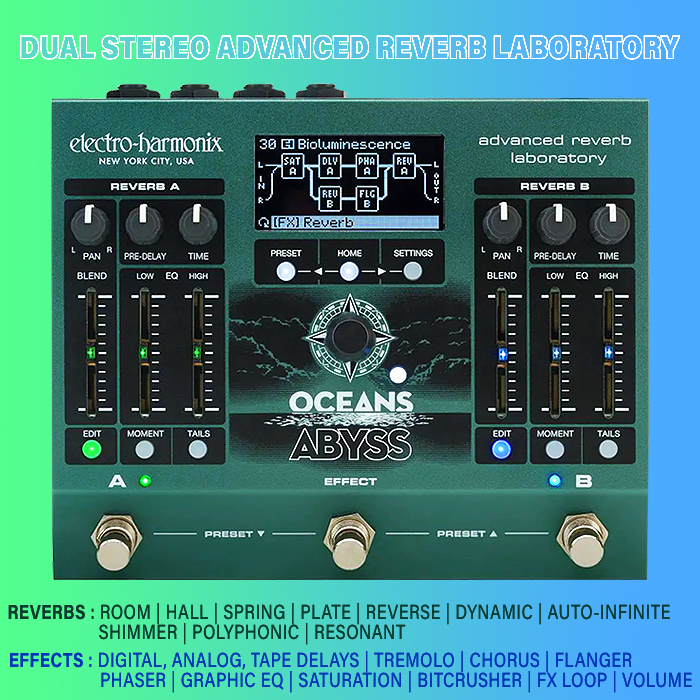
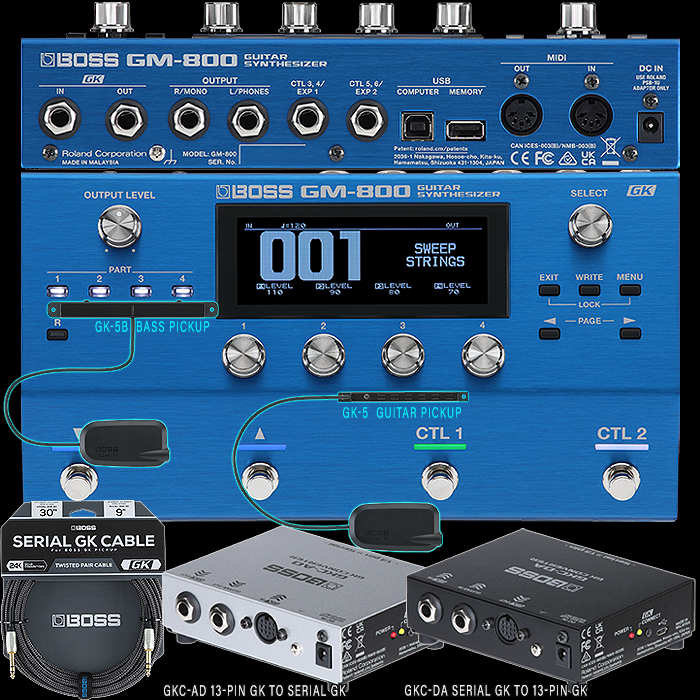
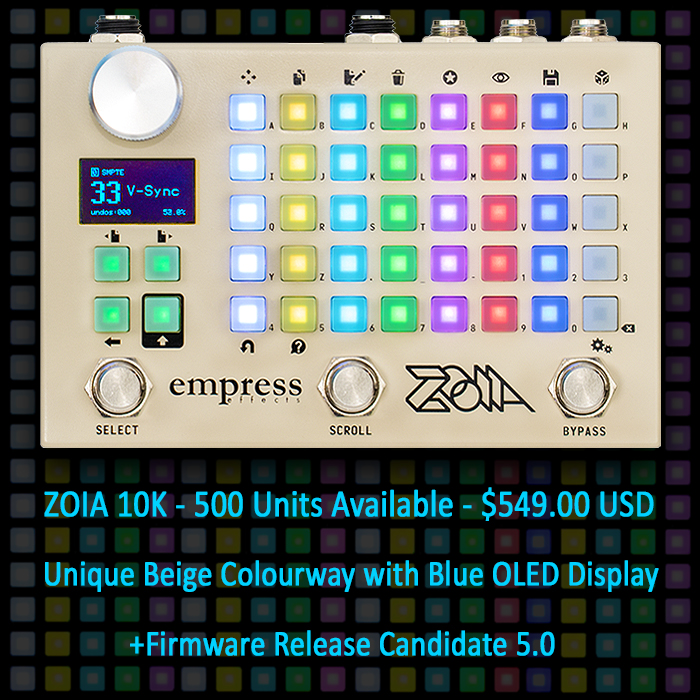
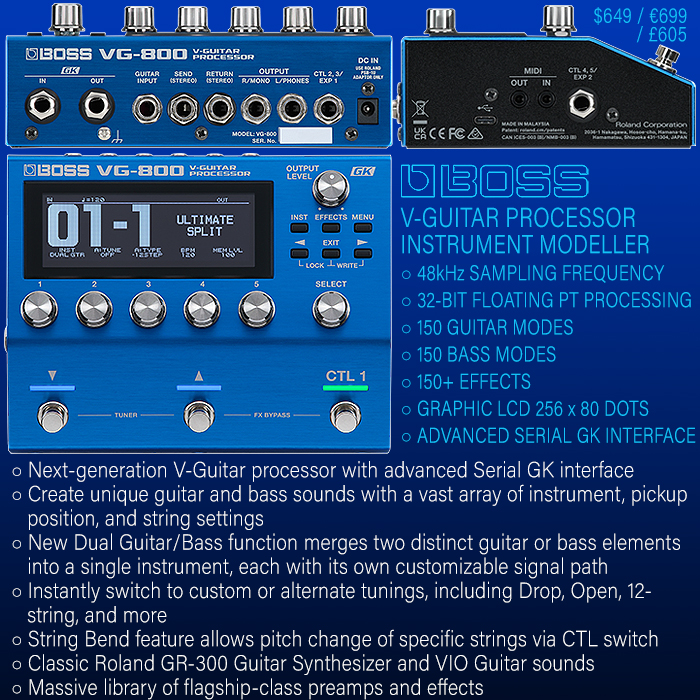

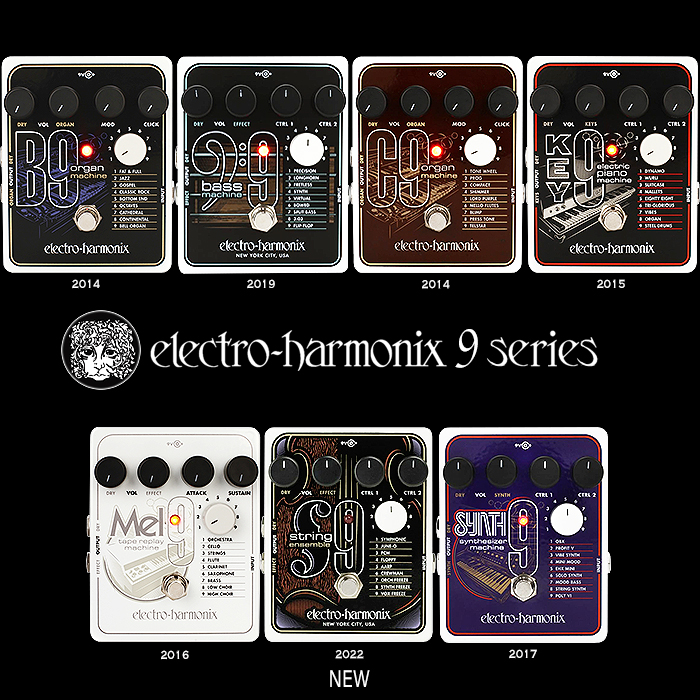

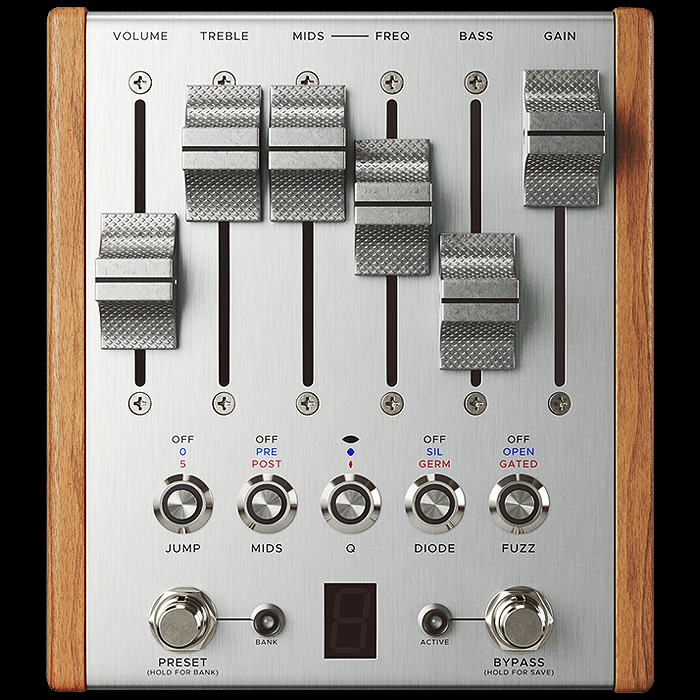


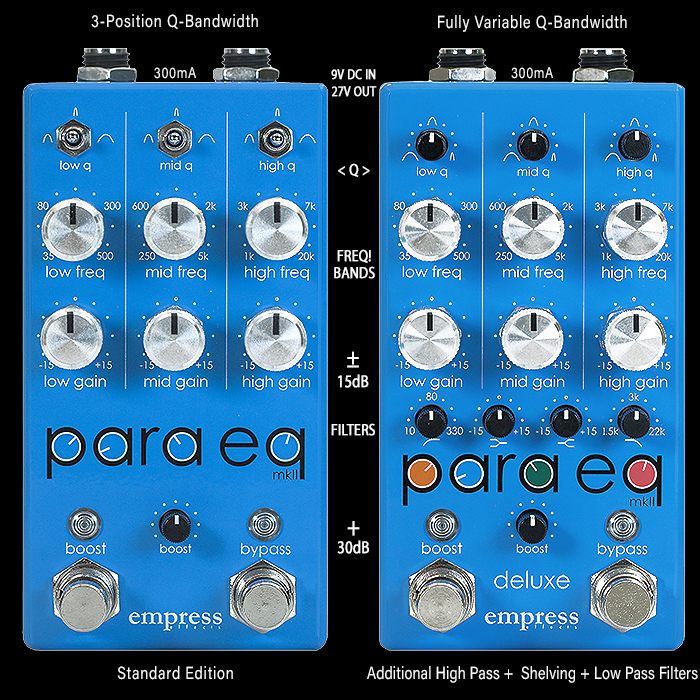
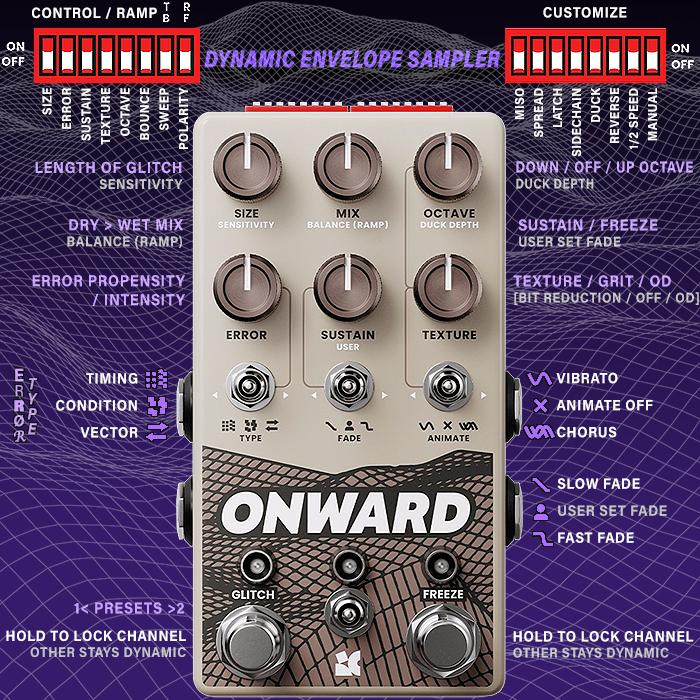
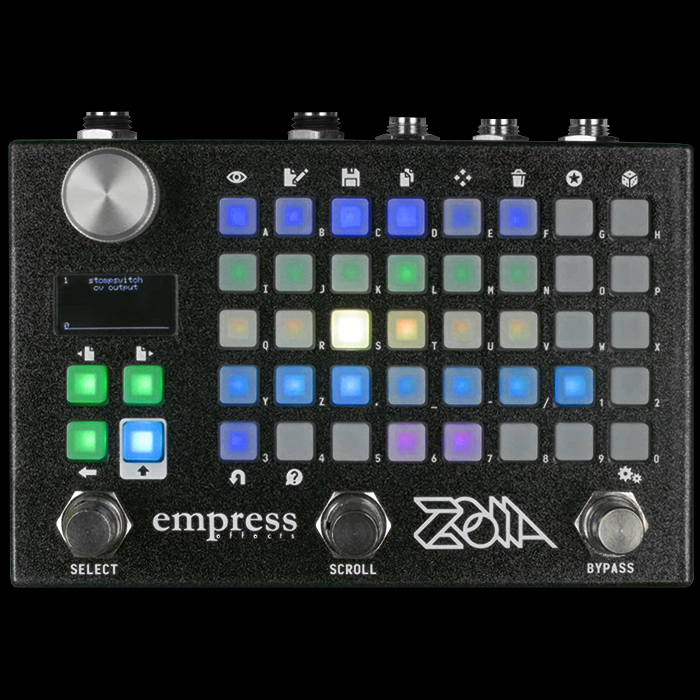
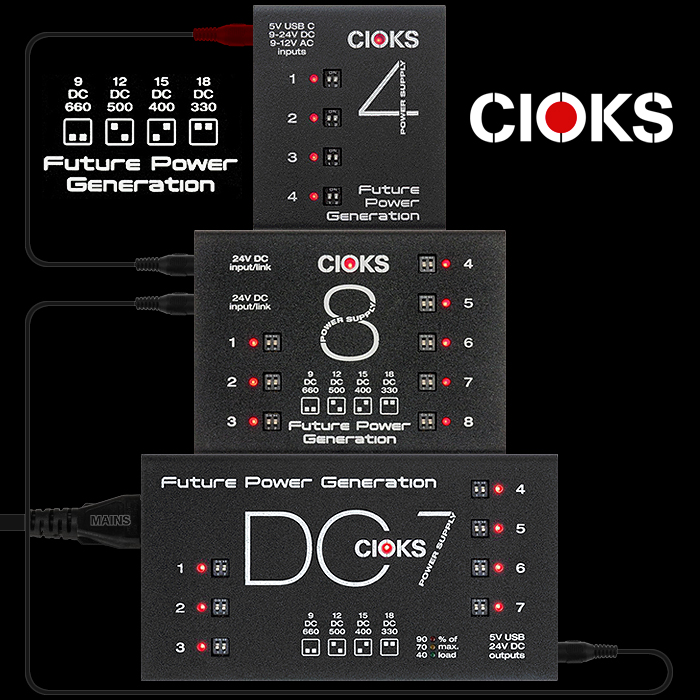
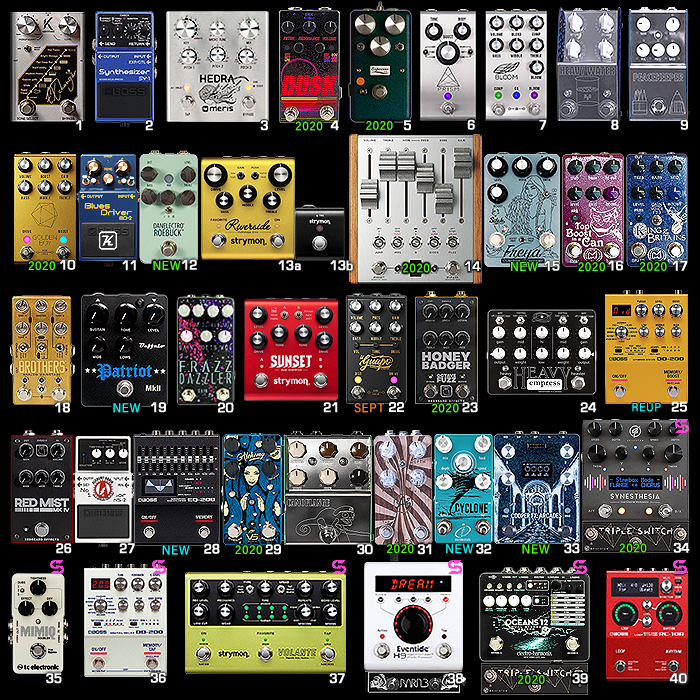
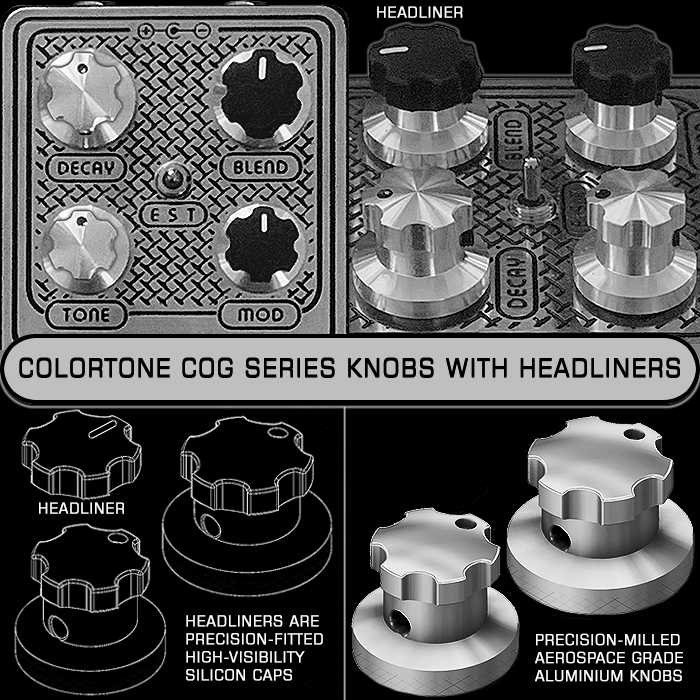

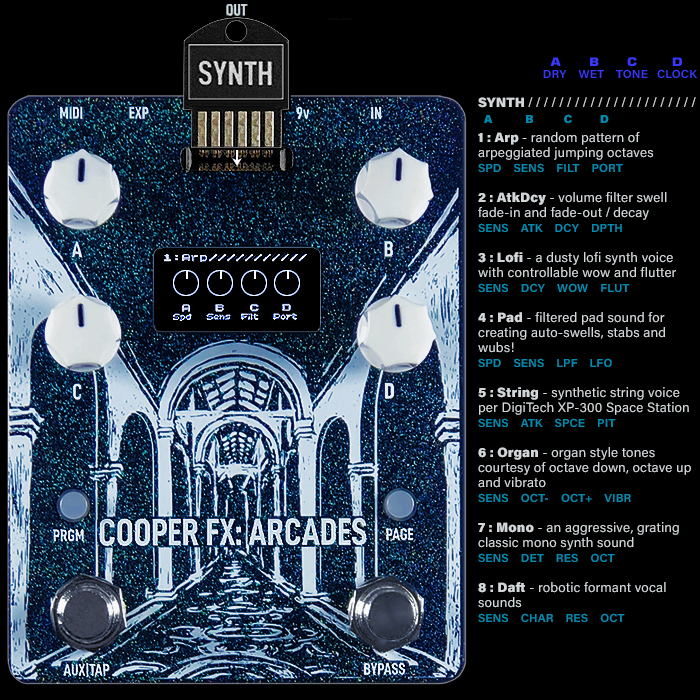

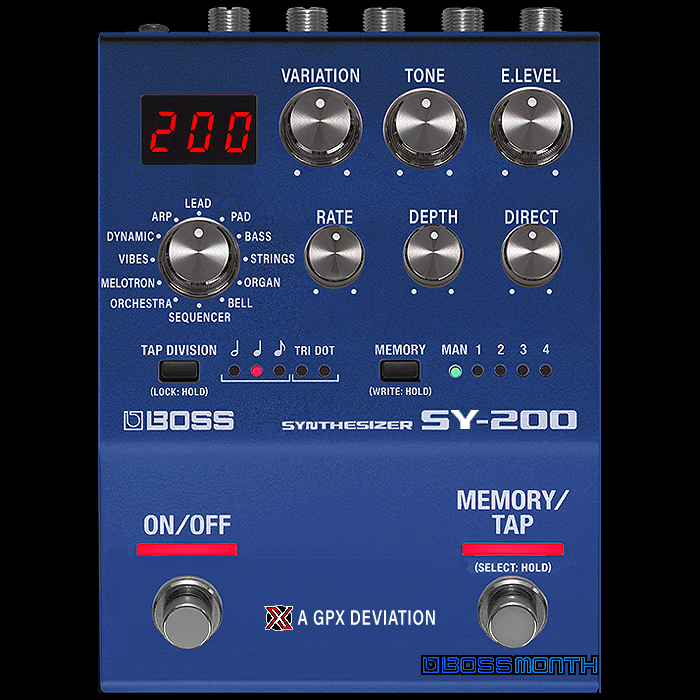
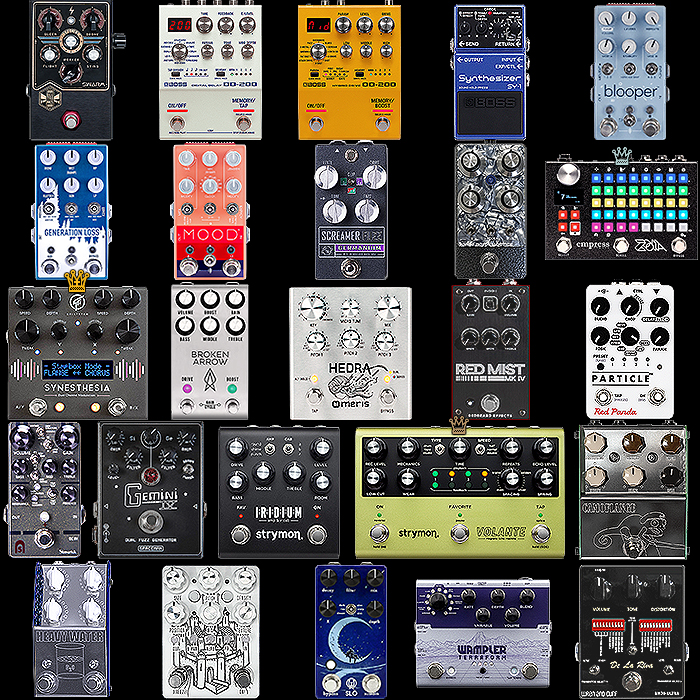

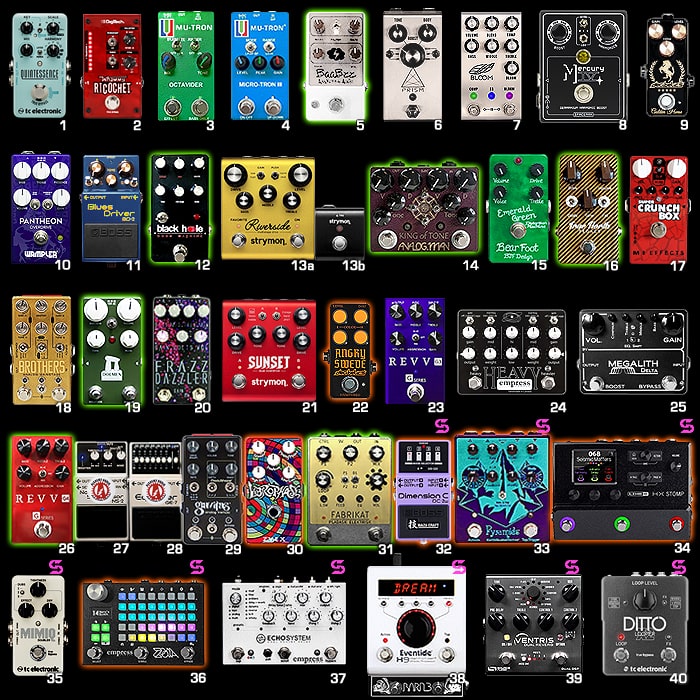
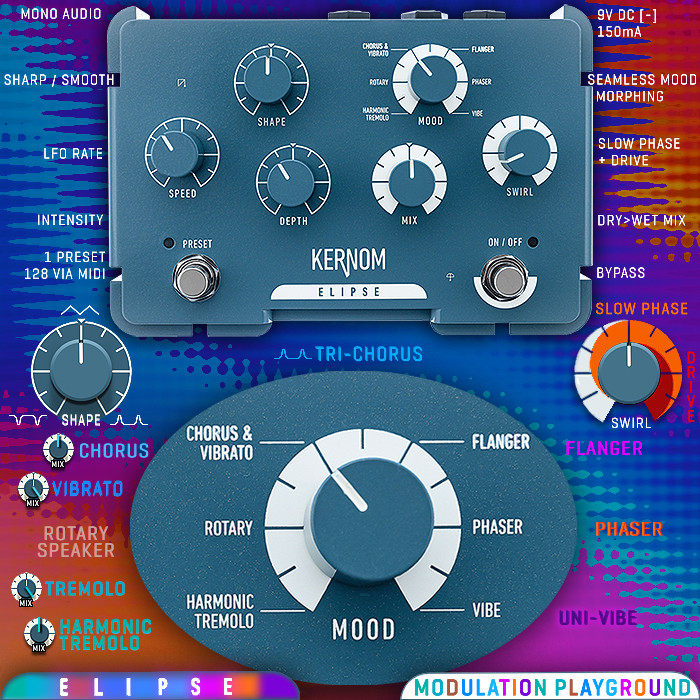

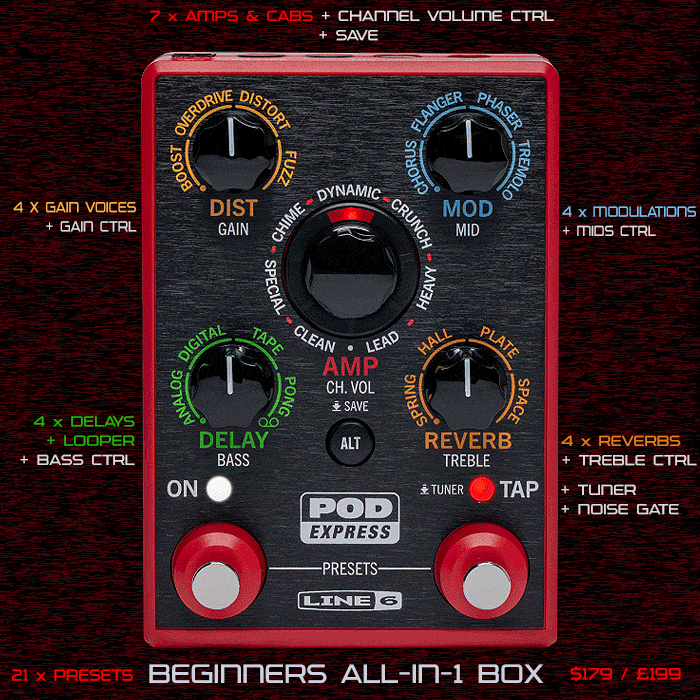
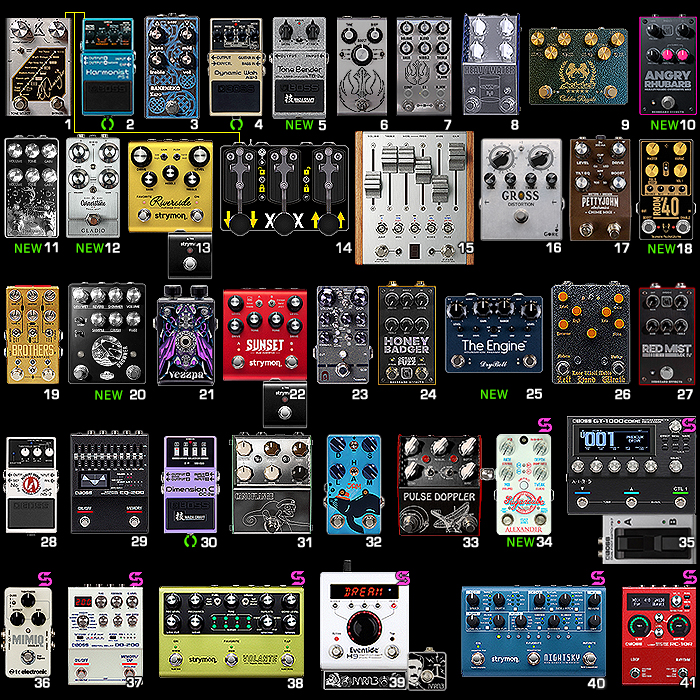
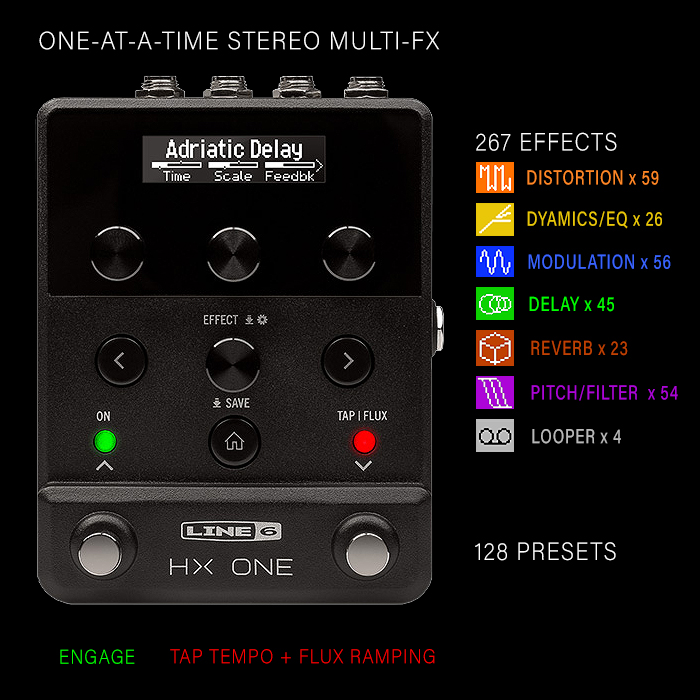
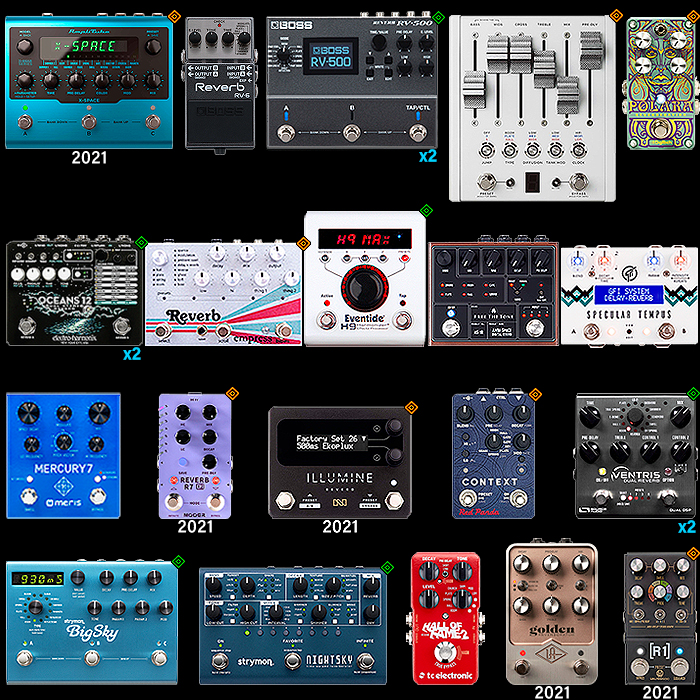
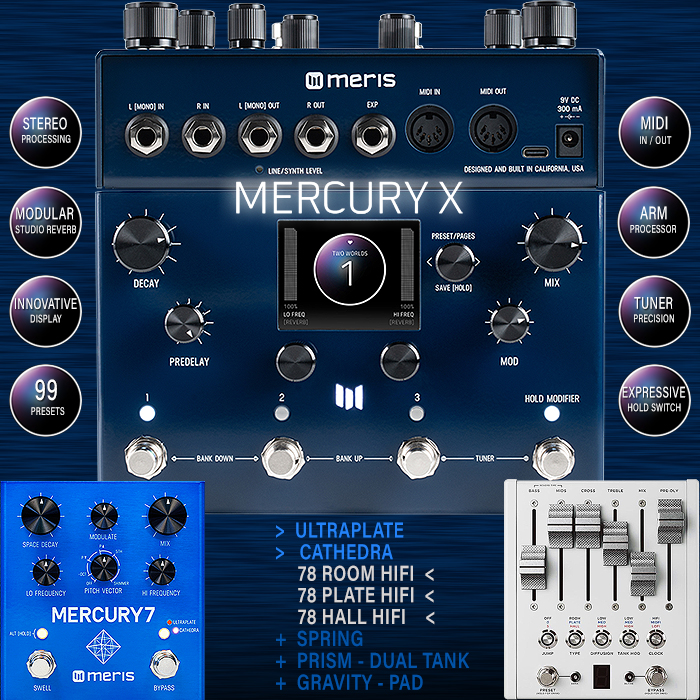
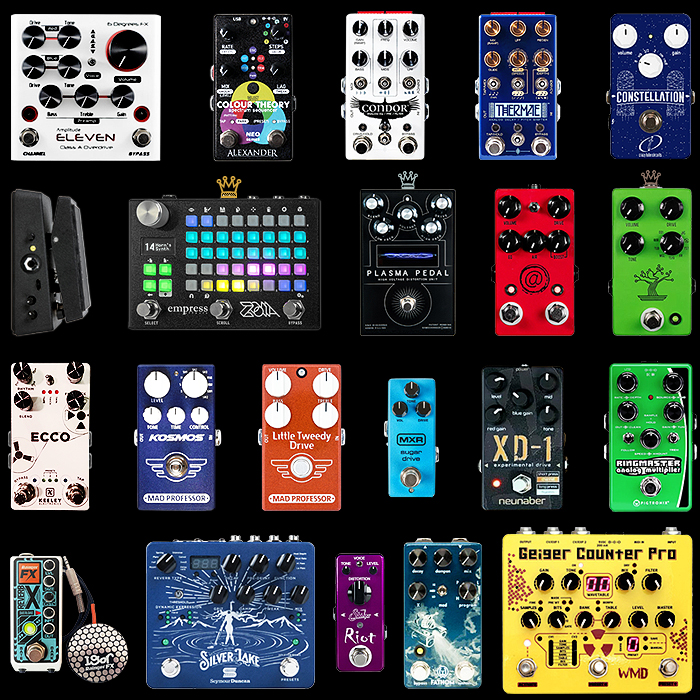
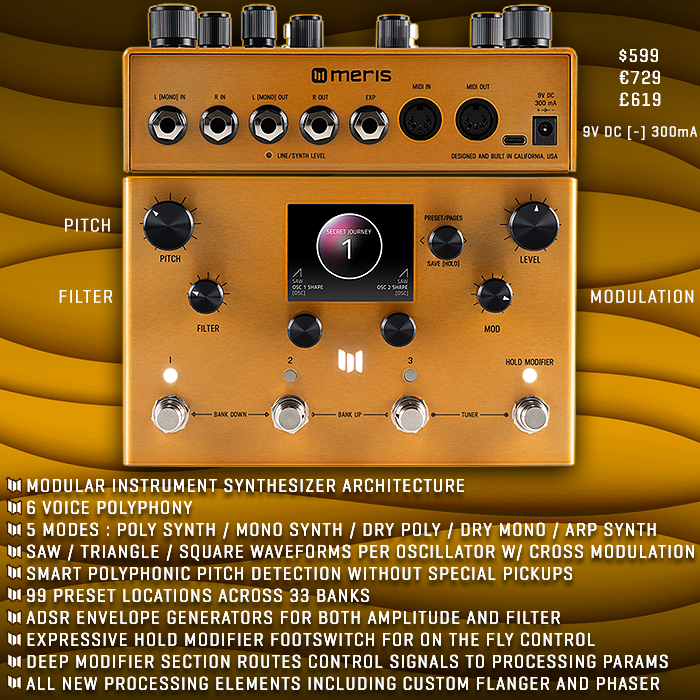
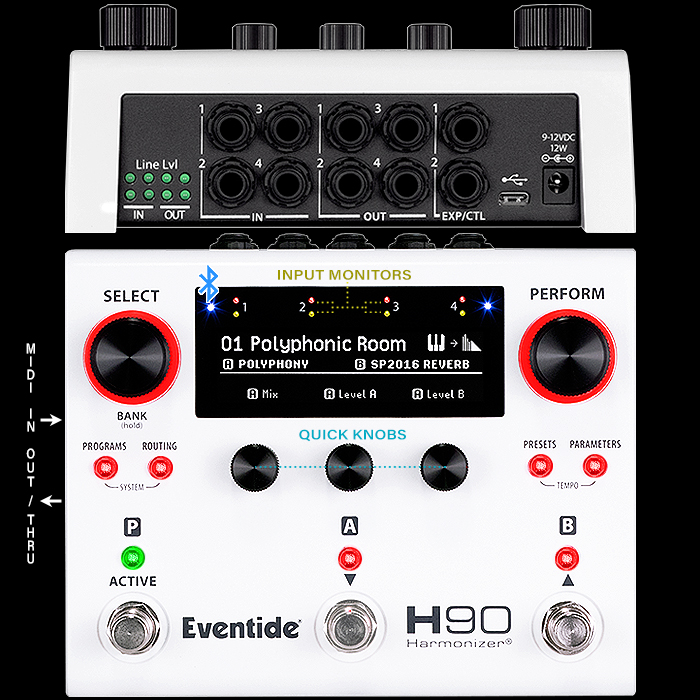
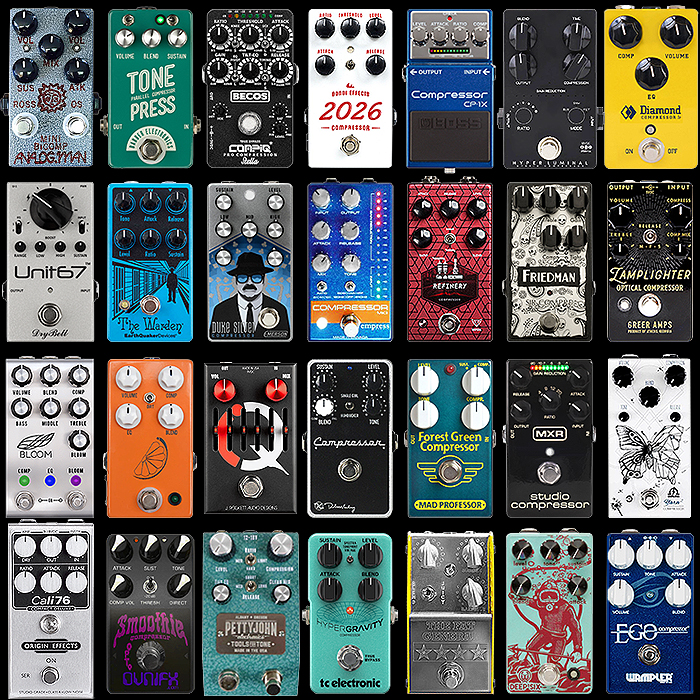
![First-hand Impressions of the Walrus Audio Mako Series II [M1] High-Fidelity Modulation Machine First-hand Impressions of the Walrus Audio Mako Series II [M1] High-Fidelity Modulation Machine](https://d6a2e7ghqts3o.cloudfront.net/AcuCustom/Sitename/DAM/556/2024-GPX-Walrus-Audio-Mako-II-M1-Y-7001.jpg)
